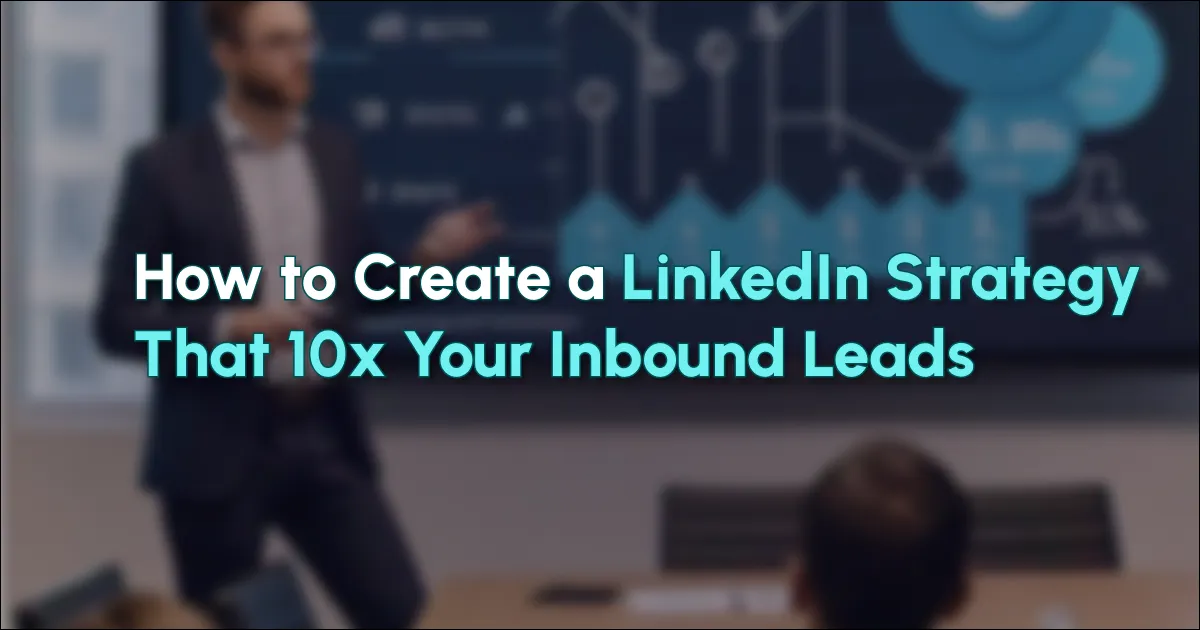
Most LinkedIn "lead generation" strategies are just glorified spam campaigns. You know the type - automated connection requests, generic DMs, and that person who keeps inviting you to their free masterclass.
But here's what nobody's talking about: the professionals who are quietly generating 6-7 figures from LinkedIn aren't using any of these tactics.
After analyzing over 100 successful LinkedIn sales funnels, I've discovered something interesting: there's a clear pattern to turning casual connections into high-value clients. And no, it doesn't involve sending cold DMs about "exciting opportunities."
The LinkedIn Funnel That Actually Works
Think of your LinkedIn strategy like a dating app (stick with me here). You wouldn't propose marriage in your first message, right? The same principle applies to business relationships.
Here's how the pros do it:
Stage 1: The First Impression (Awareness)
From stranger to connection
This is where most people mess up. They try to sell before they've even said hello. Instead, focus on:
-
Making your profile a client magnet (more on this below)
-
Showing up consistently with valuable content
-
Being someone worth connecting with
Key Metrics to Track:
-
Profile view rate (aim for >25%)
-
Connection acceptance rate (target: >40%)
-
Content reach (should grow 10% monthly)
Stage 2: The Getting-to-Know-You Phase (Engagement)
This is where you transform from "random connection" to "trusted voice." Your job here is to:
-
Engage meaningfully (no "Great post! 🔥" comments -- use LiGo's comment extension)
-
Share insights that make people think
-
Start actual conversations
Success Indicators:
-
Engagement rate above 8%
-
Quality comments (actual discussions)
-
DM responses (aim for >30%)
Stage 3: Building Trust (Nurture)
Now we're getting somewhere. This is where relationships deepen through:
-
Regular, valuable interactions
-
Resource sharing
-
Problem-solving discussions
What to Measure:
-
Conversation depth (are they asking questions?)
-
Resource engagement (do they use what you share?)
-
Unsolicited meeting requests (the holy grail)
Stage 4: The Natural Close (Conversion)
If you've done the previous stages right, this happens organically. You'll see:
-
Prospects asking about your services
-
Natural sales conversations
-
Referrals from your network
Track These Numbers:
-
Meeting conversion rate (>20% is solid)
-
Proposal acceptance rate (aim for >30%)
-
Client lifetime value (should be 5x your effort)
Making It Work: The Daily Game Plan
"Great theory," you're thinking, "but how do I actually do this?"
Here's your daily action plan (total time: 45 minutes):
Morning Coffee Routine (20 mins)
-
Comment thoughtfully on 5 prospect posts
-
Share one valuable insight
-
Respond to your post comments
Lunch Break Tasks (15 mins)
-
Connect with 10 qualified prospects
-
Engage with new connection posts
-
Send 3 value-adding messages
Evening Wrap-up (10 mins)
-
Review your engagement metrics
-
Plan tomorrow's content
-
Follow up with warm leads
The Content That Converts
Here's a content strategy that won't make you feel like a LinkedIn influencer wannabe:
The 5-3-2 Weekly Mix:
-
5 valuable industry insights (your expertise)
-
3 case studies/success stories (your proof)
-
2 personal experience shares (your authenticity)
The Post Structure That Works:
Hook (attention-grabbing fact/question)
↓
Problem (relatable challenge)
↓
Agitation (why common solutions fail)
↓
Solution (your unique insight)
↓
Proof (specific results/outcomes)
↓
CTA (clear next step)
Common Questions (Because I Know You're Wondering)
"How long until this works?"
With consistent effort, expect initial results in 30-45 days. The real magic happens around day 90.
"Do I need to spend hours on LinkedIn?"
Nope. 45-60 minutes a day, broken into three chunks, is plenty.
"What's the cost per lead?"
Just your time. Most people see costs of $20-50 per qualified lead, compared to $100-300 through paid channels.
"How do you keep it all organized?"
This is exactly why we built LiGo. It helps you generate strategic content ideas and maintain consistency without spending hours staring at a blank screen.
Your Next Steps: The 30-Day Sprint
-
Week 1: Fix Your Foundation
-
Update your profile (use the formulas above)
-
Define your ideal client
-
Set up your tracking system
-
-
Week 2: Build Momentum
-
Start your content rhythm
-
Begin strategic networking
-
Track your baseline metrics
-
-
Week 3: Deepen Engagement
-
Implement your messaging strategy
-
Start meaningful conversations
-
Share valuable resources
-
-
Week 4: Optimize for Conversion
-
Set up your meeting system
-
Create your proposal framework
-
Establish follow-up sequences
-
The Bottom Line
LinkedIn lead generation isn't about hacks, automation, or being an influencer. It's about consistently showing up, providing value, and building real relationships.
Need help creating consistent, engaging content that attracts your ideal clients? That's where LiGo comes in. Our Premium plan includes unlimited content ideas and post optimization – perfect for professionals serious about building a LinkedIn lead generation machine.




